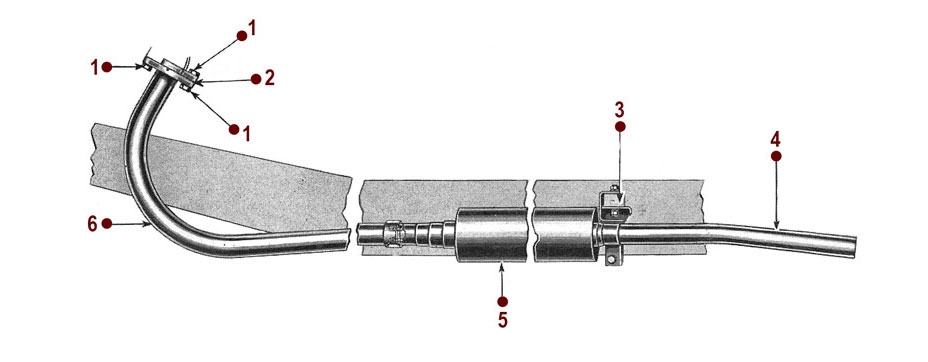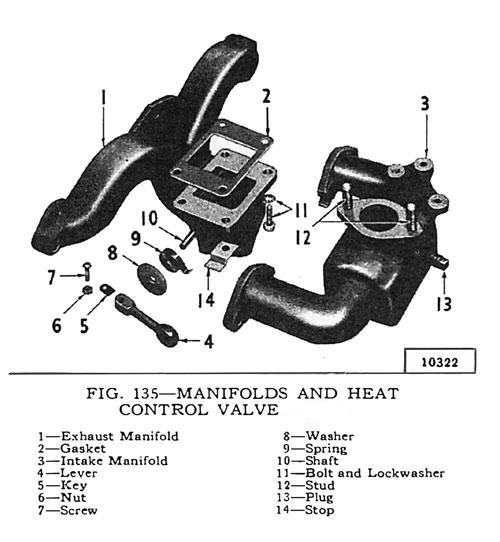Exhaust Service Standards - Wagon
Exhaust system illustration shown for reference only - click here to shop for these parts by interactive diagram

Looking for Exhaust parts for your vintage Willys or Jeep? Search Exhaust by Category or by Diagram
4-134 L Exhaust
On L-head engines, the exhaust and intake manifolds form one unit which is mounted on the left side of the engine. A valve is mounted in the exhaust section of this unit which, when open, directs the exhaust gases around the intake riser to assist in vaporizing the fuel when the engine is cold, thereby aiding in warming up the engine and reducing engine oil dilution. It also minimizes the use of the carburetor choke control. When the engine is cold, the counterweight lever closes the valve and directs the hot exhaust gases against the intake riser to assist in vaporizing the fuel. As the engine warms up, the thermostatic spring expands and opens the valve sending the exhaust gas directly into the exhaust pipe. Note that the thermostatic spring is assembled to rest on top of stop No. 14 in Fig. 135. The manifold heat control valve must operate freely without binding or excessive play. Each time the valve bushings are lubricated, proper operation of the valve should be checked. When assembling the manifolds to the cylinder block, new gaskets should be installed, and the nuts drawn up evenly until they are tight, to avoid leakage. Torque wrench reading, 29-35 ft. lbs. [4,01- 4,84 kg-m.]. (G-1, p113)

Filling Cooling System
To fill the cooling system, remove the fill cap and fill the tank to the top. Replace the cap and run the engine at medium speed for approximately one minute. Remove the cap and recheck the coolant level. (H-2, p115)
Draining Cooling System
To completely drain the cooling system it is necessary to open the drain in the bottom of the radiator and also a drain on the right side of the cylinder block. Remove the radiator cap to break any vacuum that may have developed. Should the cooling solution be lost from the system and the engine become overheated do not refill the system immediately but allow the engine to cool or refill slowly while the engine is running. If cold solution is poured into the radiator while the engine is overheated there is danger of cracking the cylinder block and head. (H-3, p 115)
Engine Overheating
An engine will not be damaged by high coolant temperatures unless the coolant boils. (H-15A, p 118)
* Excerpt from the Service Manual for Jeep Utility Vehicles
RELATED VIDEOS:
